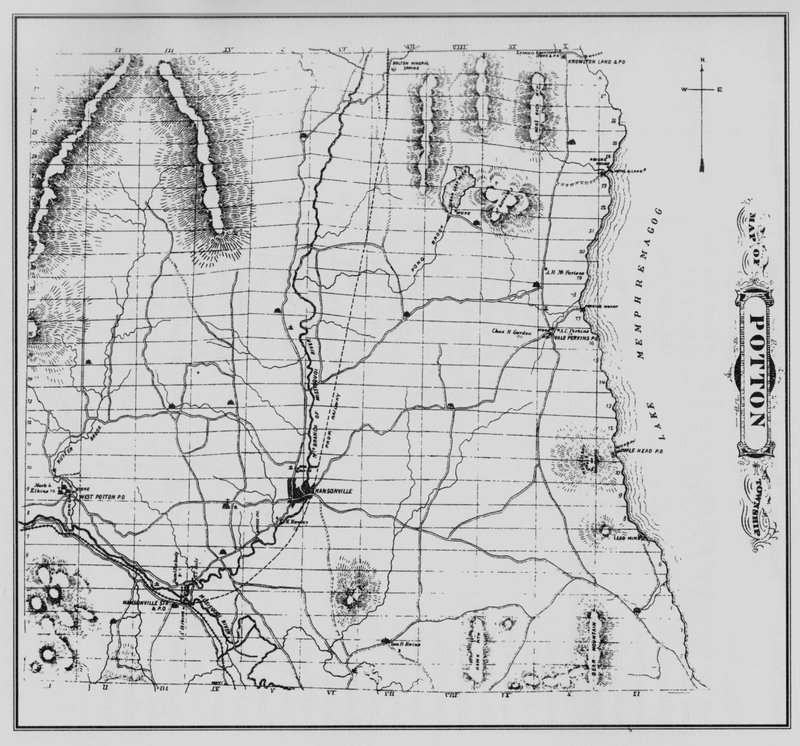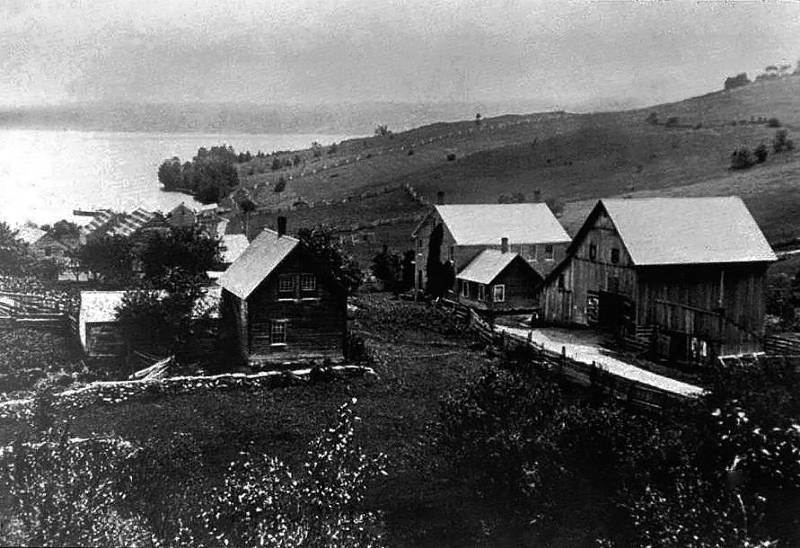North Potton
Le nord du canton de Potton prit beaucoup de temps à être colonisé et, encore aujourd'hui, la forêt domine la majeure partie du territoire.
À l’intérieur, les premières fermes s'établirent le long du chemin Peabody entre 1819 et 1826.
La partie sud du chemin de l’Etang Sugar Loaf ne fut ouverte que vers 1870 et, en 1881, la portion nord du chemin Schoolcraft n'apparaît que comme un sentier en friche .
Les premières fermes des Schoolcraft, Traver-Bradley ne s'établirent dans ce secteur que vers 1890.
Knowlton's Landing devint toutefois un important point de transit pour les voyageurs de la diligence entre Montréal et Boston et obtint le premier bureau de poste du canton vers 1820. En effet, des 1805, une carte manuscrite de Joseph Bouchette montre une route qui part de cet endroit allant vers l’ouest et passant par la passe Bolton.
La route de la diligence passait par Copp's Ferry, ancien nom de Georgeville, sur la rive est du lac Memphrémagog, et fondée en 1797 par Moses Copp qui inaugura le premier traversier reliant Knowlton's Landing où les voyageurs reprenaient la route vers Montréal. Mentionnons aussi que Knowlton's Landing fut aussi appelé Tuck's Landing du nom de John Tuck un supporteur du Parti conservateur et qui fut opérateur de traversier, courtier en douanes, aubergiste du Pine Lodge (aujourd'hui L'Aubergine), maître de poste et conseiller municipal . Quand le Parti libéral reprit le pouvoir, on changea de nouveau le nom pour Knowlton's Landing gratifiant ainsi les Knowlton qui supportaient les Libéraux!
The north of Potton Township was slow to be settled and even today forest still covers most of the area.
In the interior, the first farms were established along Peabody Road between 1819 and 1826. The southern portion of Sugar Loaf Pond Road did not open until about 1870 and in 1881 part of Schoolcraft Road still appeared on the map only as a brush path. The Schoolcraft, Traver-Bradley and Reilly farms were established around 1890.
However, Knowlton's Landing soon became an important transit point and was the location of the first post office in Potton around 1820. As early as 1805, a Joseph Bouchette map shows a road leading from Knowlton's Landing going west through the Bolton Pass.
It was used by the stagecoach travelling between Montreal and Boston. The journey took travellers through Copp's Ferry, the former name for Georgeville on the east shore of Lake Memphremagog. Georgeville was settled in 1797 by Moses Copps who operated the first ferry linking Knowlton's Landing.
Ferry landing wharves were of Federal jurisdiction and their names changed with whatever party ruled in Ottawa. The Knowltons were Liberal supporters and gave their name to the Landing but when the Conservatives came to power it took the name of Tuck's Landing in honor of rheir supporter, John Tuck, a ferry operator.

